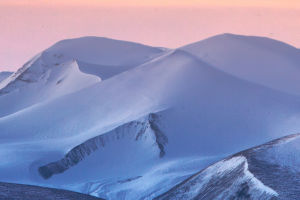The snow-capped mountains have peculiar scenery, beautiful and magnificent, and are a good place for tourism.
Below I will introduce you to some famous snow-capped mountains.
1. Annapurna.
Annapurna Peak is 8091 meters above sea level, and its longitude and latitude coordinates are 83.82° east longitude and 28.6° north latitude. Annapurna is the tenth highest peak in the world, belonging to the Himalayas, and its location is very remote. Its climate is complex and changeable, which is roughly similar to that of Mount Everest. It is dry and windy in the winter half of the year, which is a dry and windy season. The summer half of the year is the rainy season, which is characterized by a continental plateau climate. Generally speaking, the rainy season is from early June to mid-September every year. The heavy rain brought by the strong southeast monsoon causes frequent ice avalanches and avalanches, resulting in a harsh climate with clouds and fog on the mountains and raging ice and snow. Only the best climbing season is spring, and the good weather cycle lasts for a long time, usually about two weeks.
2. Mt. K2.
The name means "tall and majestic", but some people say it means "white goddess". The steep slopes are covered with chute marks from avalanches. The top of the mountain is an ice slope that rises slightly from north to south, with a large area. The north side is like a knife and an axe, with an average slope of more than 45 degrees. From the base camp on the north side to the summit, the vertical height difference is as high as 4,700 meters, which is the largest vertical height difference between peaks over 8,000 meters in the world. The glacier on the north side is called the Chogori Glacier, and the terrain is complex and changeable. The surface of the glacier is shattered, and the cracks of light and dark ice criss-cross. The valley on the west side of the glacier is a steep rock wall, and rolling rocks, ice avalanches, and avalanches are frequent.
3. Mount Everest
Mount Everest is in the shape of a giant pyramid, majestic and majestic, with extremely steep terrain and a very complex environment. On the glacier, there are various, magnificent and rare ice tower forests, ice cliffs with heights of dozens of meters, light and dark ice fissures with step-by-step traps, and dangerous ice avalanches and avalanches. The Himalayas where Mount Everest is located was originally an ocean. In the long geological age, a large amount of gravel and sediment were washed from the land and accumulated in the Himalayas, forming marine sedimentary rocks with a thickness of more than 30,000 meters. Floor. Over time, the height of Mount Everest also changes due to the movement of geographic plates.
Many mountaineering enthusiasts want to see the beautiful scenery in the snow-capped mountains. In addition to exploring, they still need to know the good weather in advance and pay attention to personal safety.


